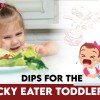
JOURNEY FROM BOTTLE TO CUP!
Booting the bottle or eliminating breastfeeds can be a difficult and stressful time both for you and your baby. A sudden withdrawal will only make the baby angry, clingy and miserable. Here are a few tips that will make the transition smoother and more enjoyable for everyone involved.
Eliminating breastfeeding completely!
Introduce Cup feeding
This should be introduced to the baby before each breastfeeding. If the child doesn’t like formula milk, you may use whole milk or flavoured milk. In fact, using expressed breast milk is also an option. But the only point is developing the habit of a cup!
Go slow!
Begin eliminating the feed that is least important for your baby, say the midday one. Replace this one with a complete cup feeding. Drop one of the breastfeeds once a week. The bedtime nursing is usually last to be given up. You can also try reducing the length of feedings. Shorten all the feeds by 2 minutes every week, until they are 5 minutes long. Then, begin by eliminating them one at a time! This should not be done for 6 months of life when your baby is exclusively on breastfeeds.
Address breast engorgement
Breast works on the principle of supply and demand and this supply is made by sucking reflex. Reduce the sucking time to decrease the milk production. Express just enough milk to relieve breast pain from engorgement (i.e. filling up of breasts with milk).
Fulfill the demand by loving your child, not feeding!
Make your child hold in your hand and cuddle. Make him believe that the milk is all over.
Eliminating excess bottle/breast feedings!
The shift from all-day milk feeds to 3-4/day
Whenever the weaning baby refuses to eat anything and comes to your for milk, give him your love and extra attention, but not feed. Start with a schedule of 3 main feeds per day, followed by 2-3 nutritious snacking.
Welcome the cup feedings!
A child who has become habitual of breastfeeding or bottle feeding and is resistant to leave the either should be introduced with cup feedings as a substitute. The longer the infant goes without using a cup, the less willing he will be to try it. Start with cup feedings from the 6th month of life so that the bottle or breastfeed doesn’t become so important for your little one!
No to toddler carrying bottle
You must have seen little babies who begin walking, moving around in their diapers strolling the entire house with a bottle in their hand. This companion bottle can interfere with two-handed play or speech. Also, it may cause tooth decay in the babies. This practice has to be stopped.
Bottle to bed is a ‘No’
Bottle at bed is a leading cause of child tooth decay all over the globe. It is an easy practice to develop as mothers feel that bedtime milk makes the child have a sound sleep, but at what cost?
The final word
The longer you wait to boot the bottle, the tougher it will be for your child to let go, as they start to get more independent and opinionated. Transition away from the bottle and make this process as stress-free as possible. Getting your little one away from the bottle and begin weaning can be difficult, but it’s essential to avoid obesity, iron deficiency, tooth decay, and cavities.






